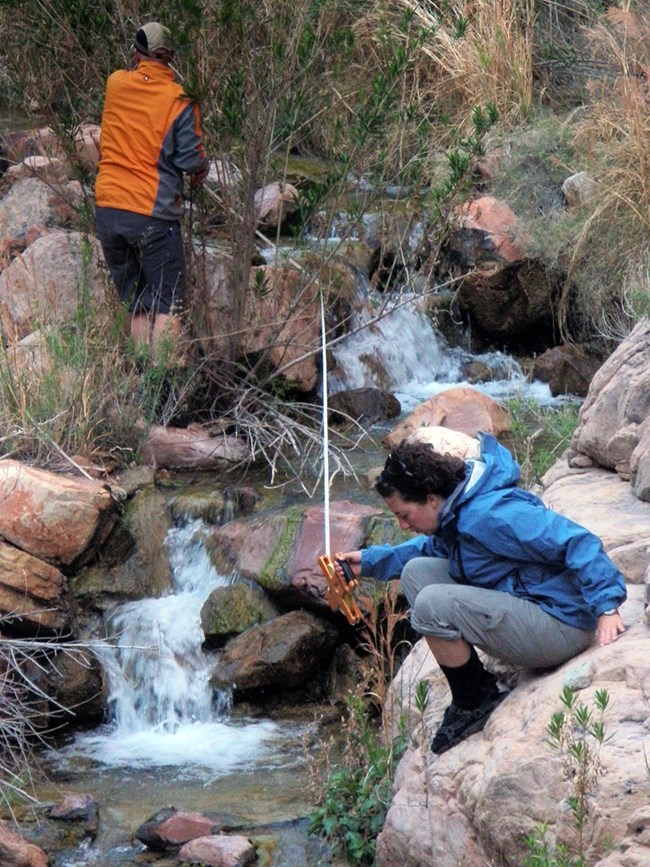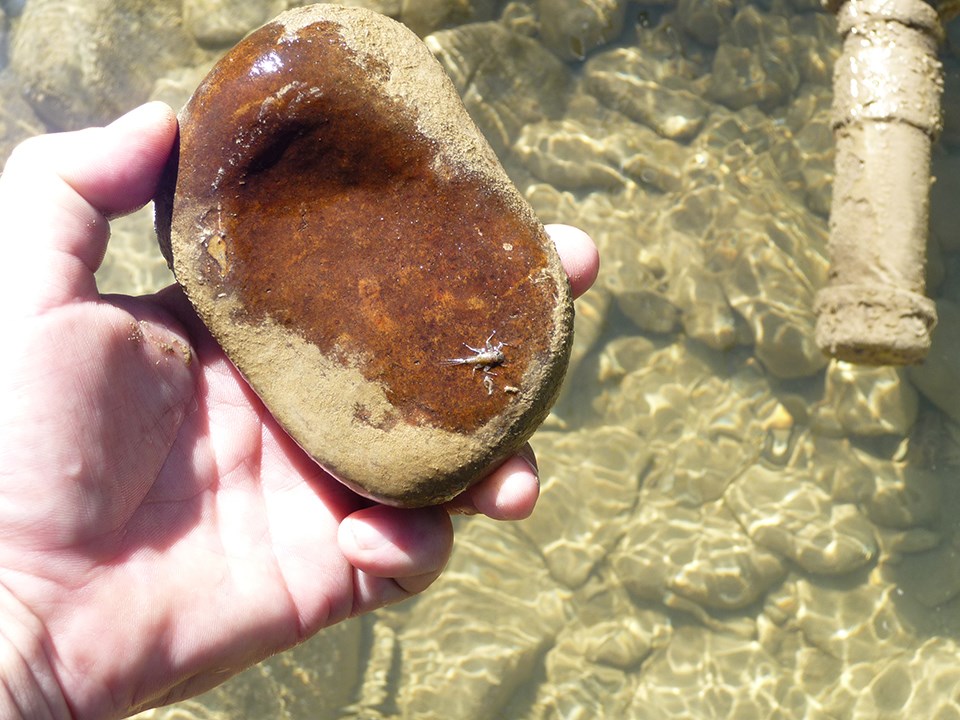
NPS
SCPN Monitoring Sites Webmap (NPS staff only)
Aquatic macroinvertebrates are small organisms that lack a vertebral column/backbone and live all or part of their lives in water. They are found in freshwater ecosystems around the world and include insect larvae, worms, and snails. They play a key role in the cycling of nutrients in aquatic systems because they perform multiple roles in the ecosystem:
- as primary consumers that process live organic material (e.g. algae, aquatic vegetation)
- as detritivores that feed on and break down dead organic material (e.g. leaves, woody debris)
- as predators that feed on other invertebrates
- as prey for fish, amphibians, reptiles, aquatic birds and mammals
Aquatic and riparian habitats are among the most threatened ecosystems worldwide. Pollution, development, logging, grazing, water withdrawal, and climate change are just some of the threats they face. Because aquatic macroinvertebrates are found in all aquatic ecosystems, and because they are sensitive to environmental change, they are important indicators of aquatic ecosystem health. We monitor aquatic macroinvertebrates to detect changes in aquatic systems due to chemical, physical, and biological disturbances. In addition, long-term monitoring of aquatic macroinvertebrates complements water quality monitoring. Together, they provide a more comprehensive evaluation of aquatic system health.
Monitoring Objectives
Focusing on species abundance and diversity, our monitoring objectives are to
- determine the status and trends in the composition and abundance of aquatic macroinvertebrate assemblages
- determine the distribution and condition of aquatic macroinvertebrate habitats

NPS / SCPN
Vital Signs and Metrics
Southern Colorado Plateau Network (SCPN) parks have identified two vital signs and associated metrics for this project:
1. Aquatic macroinvertebrates:
- Species composition
- Abundance
2. Habitat condition
-
Water depth
- Water velocity
- Substrate size
- Canopy closure
Monitored in These Parks and Streams
- Bandelier National Monument - Capulin Creek and Rito de los Frijoles
- Grand Canyon National Park - Bright Angel, Garden, and Hermit Creeks
- Mesa Verde National Monument - Mancos River
Monitoring Project Status
Aquatic macroinvertebrate populations are monitored each year at sites on selected streams in four SCPN parks. Samples are sent to the Bureau of Land Management's National Aquatic Monitoring Center's Bug Lab at Utah State University for analysis.
Aquatic macroinvertebrate monitoring in SCPN parks began in 2007. The Aquatic Macroinvertebrate Monitoring Protocol for the Southern Colorado Plateau Network was published in September 2011.
Project Contact
Stacy Stumpf, Aquatic Ecologist
Reports and Publications
Brasher AM and Others. 2011. Aquatic Macroinvertebrate Monitoring Protocol for the Southern Colorado Plateau Network. Natural Resource Report. NPS/SCPN/NRR—2011/460. National Park Service; U.S. Geological Survey. Fort Collins, Colorado.
Monitoring Reports
Periodically, we publish reports on each vital sign that describe what we are learning in the field. These monitoring reports are more in-depth than resource briefs and include data analysis and a discussion of our findings. Our monitoring reports provide the most recent published findings from our field work.
Aquatic Macroinvertebrate data summary monitoring reports from 2007 - 2015 are being reviewed and are unavailable for download. Please contact Stacy Stumpf if you have questions about SCPN aquatic macroinvertebrate data.
Last updated: October 21, 2022
